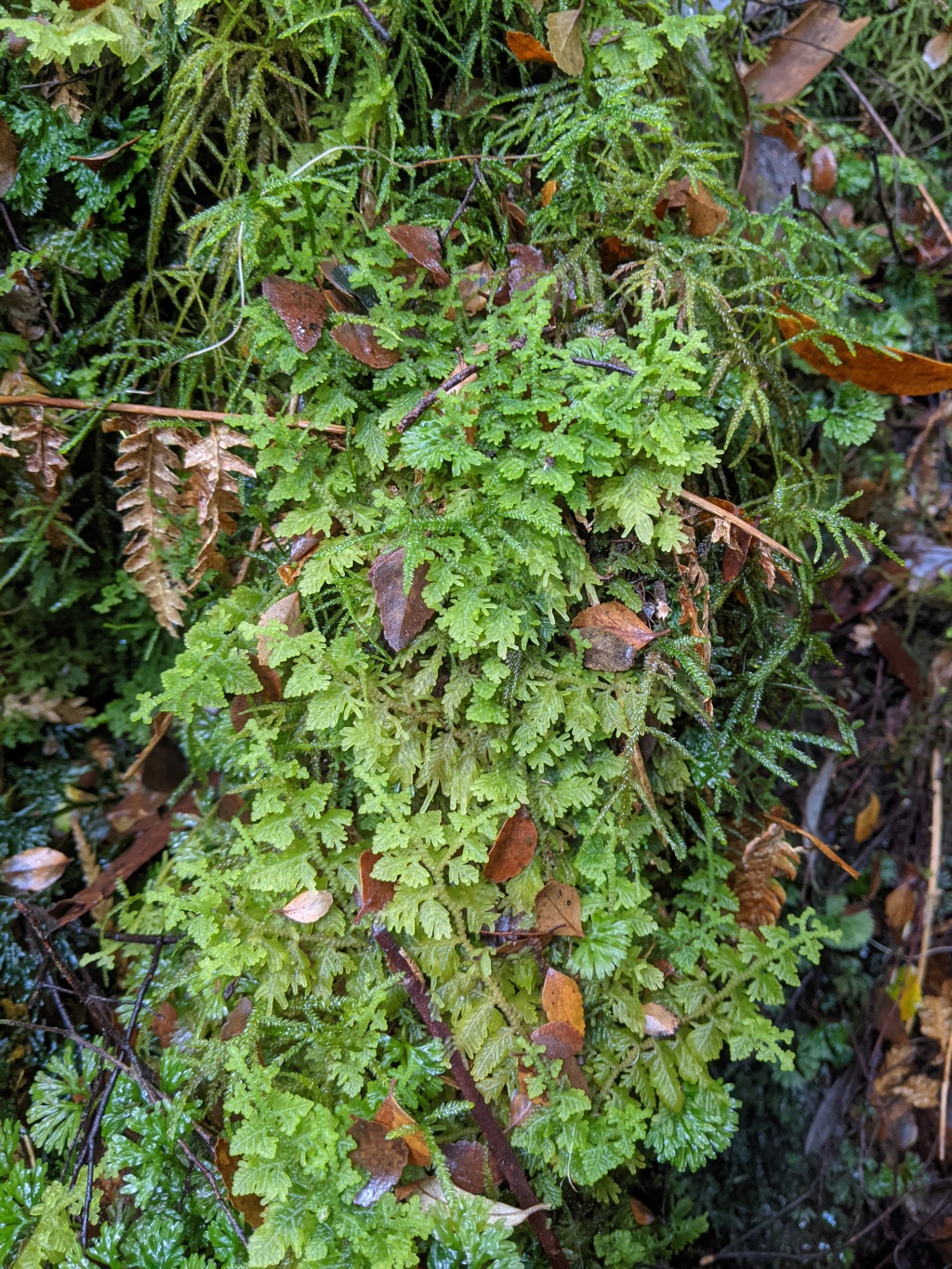Trichocolea
Terrestrial, lithophytic or epiphytic, dioicous. Asexual reproduction rarely by fragmentation of cilia (not in Victoria). Stems prostrate to procumbent, regularly 1–3-pinnate, with or without (not in Victoria) paraphyllia; branches emerging from main stem abaxial to modified lateral leaf with fewer lobes and without a collar of tissue at base. Lateral leaves reniform to flabellate in outline, asymmetric, with a short basal undivided disc, dissected into 2–6 primary lobes, these further divided, either furcate or pinnately to eventually become uniseriate cilia, or undivided but attenuating to eventually become uniseriate cilia, succubous, distant to imbricate; lobes usually with 1–several uniseriate marginal cilia; cilia simple, forked or pinnate, often in opposing pairs, sometimes verticillate in groups of three, straight or curved, 2–8 cells long, acute to obtuse at apex. Underleaves similar to lateral leaves but more symmetric and often smaller. Leaf cells polygonal and ± isodiametric at base, becoming more elongate towards lobes, elongate in lobes and rectangular to oblong in cilia, smooth, striate-verrucose or papillose, sometimes bearing cilia on disc, thin-walled, sometimes thick-walled in cilia, without trigones, with 3–15 oil bodies; oil bodies mostly spherical to ovoid or occasionally ellipsoid to fusiform, homogenous, smooth to coarsely granular, grey. Rhizoids when present, poorly developed at bases of underleaves. Androecia intercalary on main stem, with 8–20 pairs of leaf-like bracts, each with 1–2 antheridia. Sporophyte terminal on main stem or occasionally branches but appearing lateral due to innovation, developing within a coelocaule, without a perianth or calyptra; coelocaule obpyriform or clavate, covered in bractlets and paraphyllia; capsule ellipsoid to obloid, 5–8-stratose, dehiscing by 4 regular valves; elaters bispiral; spores globose, granulate to finely rugose.
Twenty species shared between South and Central America and the Caribbean, Juan Fernandez, and south-east Asia north to Japan, through Malesia to the tropical Pacific, New Zealand and eastern Australia, with one widespread species in Europe, eastern North America and eastern Asia south into the tropics of Malesia (Schuster 2000; Katagiri et al. 2013; Söderström et al. 2016); two species in Victoria.
The highly dissected leaves in this genus makes it unmistakable among the Victorian liverworts.
Katagiri, T., Sadamitsu, A., Miyauchi, H., Tsubota, H. & Deguchi, H. (2013). Taxonomic studies of the Trichocoleaceae in Southeast Asia. III. The genus Trichocolea Dumort. Hattoria 4: 1–42.
Schuster, R.M. (2000). Austral Hepaticae Part I. Nova Hedwigia Beiheft 118. Cramer in der Gebrüder Borntraeger Verlagsbuchbehandlung: Berling & Stuttgart.
Söderström, L., Hagborg, A., von Konrat, M., Bartholomew-Began, S., Bell, D., Briscoe, L., Brown, E., Cargill, D.C., Costa, D.P., Crandall-Stotler, B.J., Cooper, E.D., Dauphin, G., Engel, J.J., Feldberg, K., Glenny, D., Gradstein, S.R., He, X., Heinrichs, J., Hentschel, J., Ilkiu-Borges, A.L., Katagiri, T., Konstantinova, N.A., Larraín, J., Long, D.G., Nebel, M., Pócs, T., Puche, F., Reiner-Drehwald, E., Renner, M.A.M., Sass-Gyarmati, A., Schäfer-Verwimp, A., Moragues, J.S., Stotler, R.E., Sukkharak, P., Thiers, B.M., Uribe, J., Váňa, J., Villarreal, J.C., Wigginton, M., Zhang, L. & Zhu, R. (2016). World checklist of hornworts and liverworts. Phytokeys 59: 1–828.
 Spinning
Spinning